More to the FEMINIQUE story
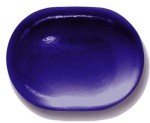
Once the first wax sculpture was done, I was satisfied with the flow of the form and its energy. I decided on the glass color. Pale Cobalt Blue. But the glass supplier was short one billet. Rummaging around the studio, I found a billet in a batch of samples and delivered all six to the foundry.
The foundry encased the wax sculpture in plaster, steamed out the wax, and went through the multi-day, temperature ramp-up and back-down, kiln casting process. The cycle ended, the piece cooled, and they began removing the plaster.
“You need to come see this.”
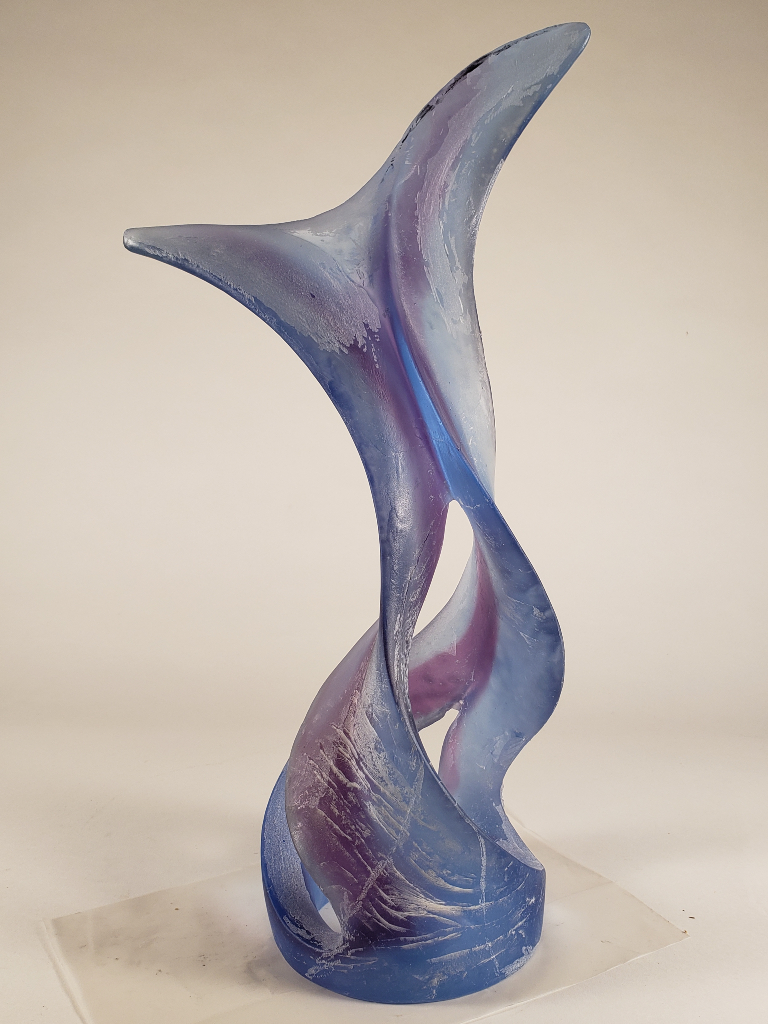
Then I got the call. “You need to come over here and see this.” I got a sinking feeling that the piece was ruined. By the time I reached the foundry, the plaster was completely removed (divested) and there appeared this form in Pale Cobalt Blue – and Purple! Where did the purple come from?
I sent a picture of the piece to the supplier to ask if they had any idea what happened. They did, indeed, have the answer. The glass factory makes a purple glass that is called a “strike color.” That means it only achieves its true color after firing. Prior to firing, the billet color is identical to Pale Cobalt Blue.
That mistake of one billet of Purple mixed with five billets of Pale Cobalt Blue produced what I consider a stupendous result.
As for how the Purple found its way through the entire piece, top to bottom, following both “branches” of the work? We can only assume that the unintentional order in which the Purple billet was added to the kiln played a huge role. However, the kiln is keeping that secret to itself!
But wait. There is more.
I was nearly done with cold working – the process of grinding and polishing. I was carrying the piece…from the wet room…to the sink…to rinse it…for inspection…when I crashed the glass…into a door jam!
The impact broke off a shard of glass on top of the point! Plus, it caused a horizontal, zig-zagged crack across the full-width of a curved structure above the base!
Heartsick.
I could not breathe. I just set the piece off on a side bench where it sat looking at me – for two years.
Then one day, I showed the piece to three well versed glass artist friends. We brainstormed possible repair techniques. We kicked around best- and worst-case scenarios. And came up with four possible options.
- Somehow get glue into the crack, like windshields are repaired? But the sculpture glass was too thick, and the crack was too tight for a glue solution.
- Re-fire the piece in the kiln? But that had failed a few years ago on a different sculpture. The attempt cost $2,000 and the crack line never disappeared.
- Re-sculpture the piece?
- Or just give up on it?
The first two options were ruled out. The fourth – giving up – would always remain available. So, #3 became my focus. Re-sculpt the piece. Right!!!
While waiting for my courage to match the challenge, I successfully re-sculpted Awakening. That boosted my confidence. [Read Awakening’s story here.]
Confidence boosted. Re-sculpture begins.
For starters, I drew lines directly on the glass, trying three different variations before I settled on one. Over a few days, I looked at it from all directions to assure myself that this was, indeed, the best option. The flow of lines blended. It felt good for the overall piece. I knew the risk and possible implications.
So, I stopped thinking, swallowed hard, and just did it.
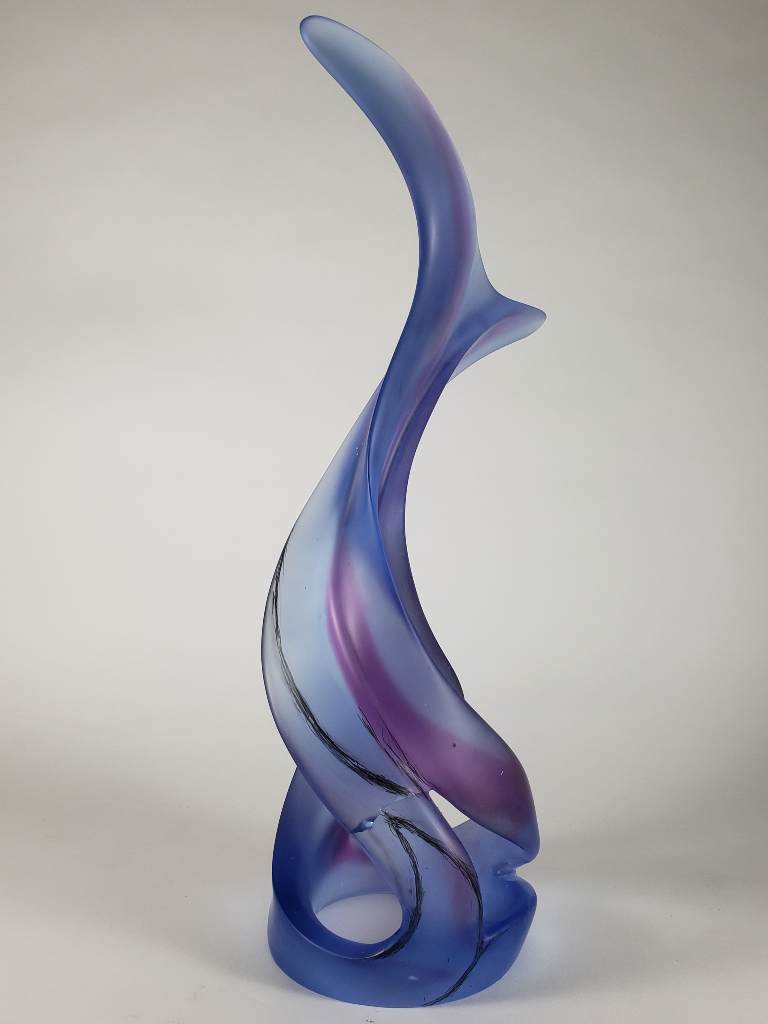
re-sculpting guide lines.
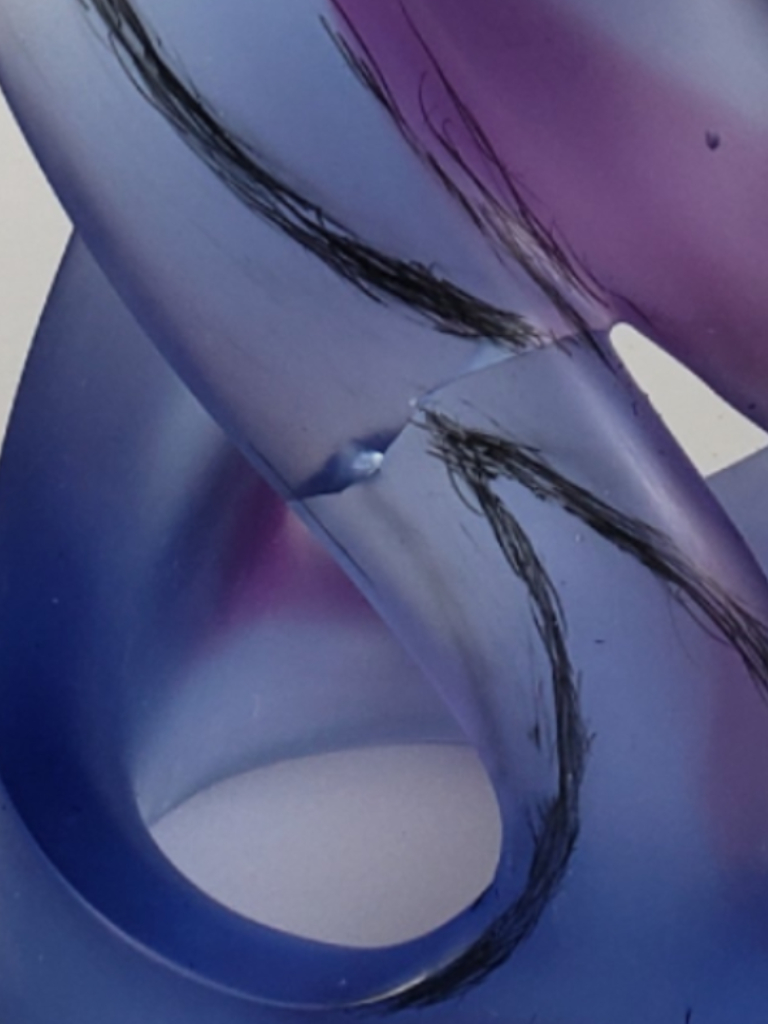
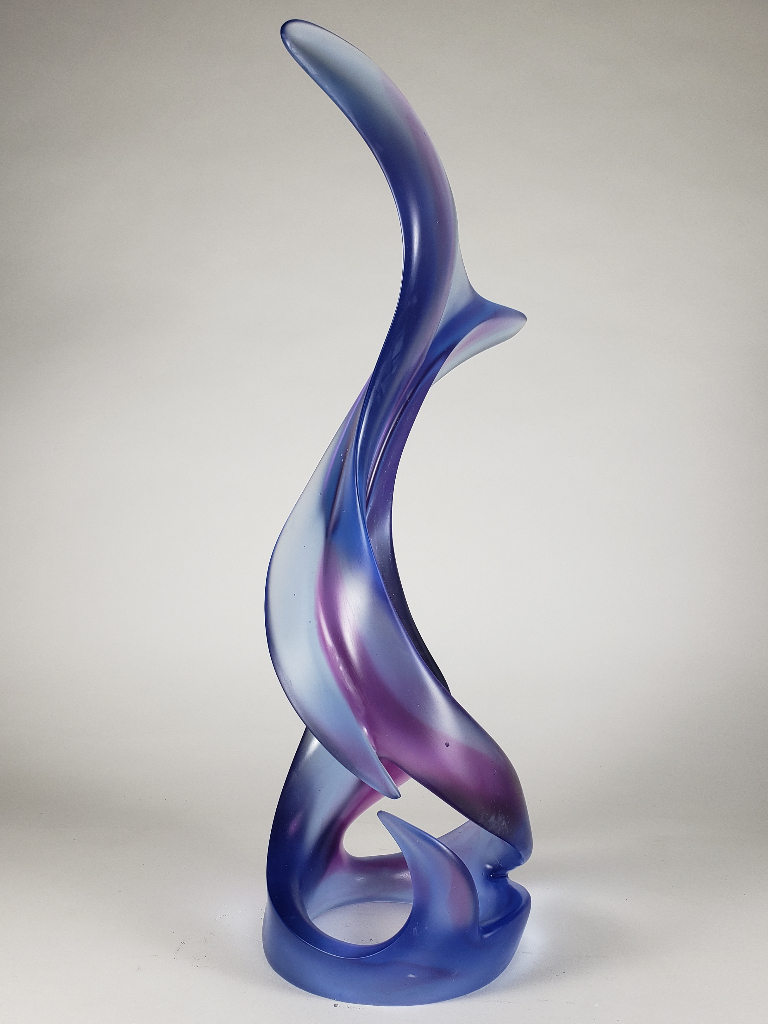
And see the result.
